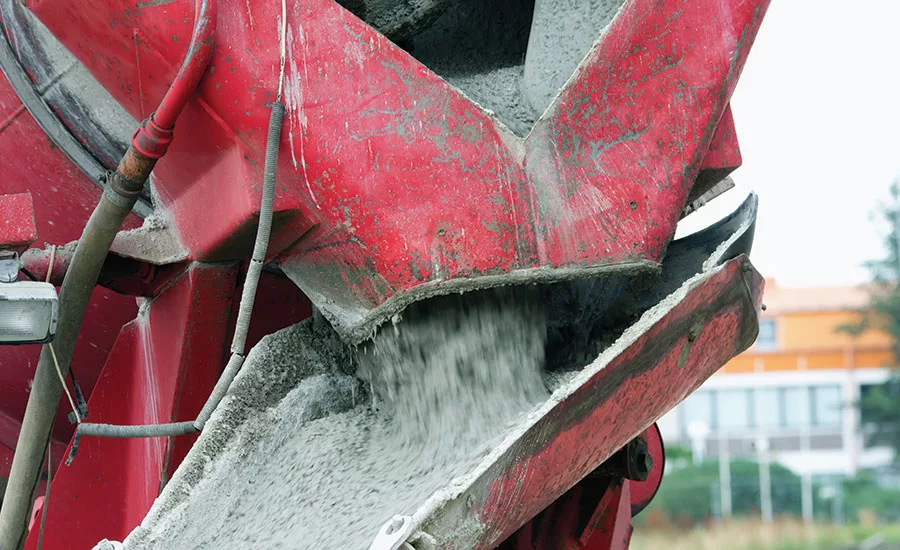How Do Drilling Fluids Affect Casing Cement on a Drilling Job?

I’ve been involved with a number of wells that required that the casing be properly cemented. Sometimes it was because of state regulations but, mostly, it was because it was the right way to build a well. Cement makes a seal between the borehole and the casing, and isolates formations that you don’t want to produce or which are contaminated. There are a number of ways to place the cement, some right and some not so right. I’ve seen drillers set the casing on bottom and back a cement truck up to the top and dump. This pretty well assures two things. First, you will end up with cement at the surface, pleasing the county inspector. Second, the likelihood of cement getting to the casing shoe and making a good seal is pretty slim. It will bridge off somewhere, or just run down in stringers. Not good.
Another common way of placing cement is by using an outside tremie line. This works pretty well if you have a large enough hole. Some states require a much larger hole than necessary, so there’s plenty of room. You can set the casing on bottom, and not have any cement to drill out when you go back in.
The third way is to pump the cement down the casing and displace it around the outside, assuring a good seal. This is the most widely used and industry accepted method. It can be spotted exactly where you need it, and will generally make a good seal in any hole that you can circulate. If the hole is stable, and you make good calculations, you can put the cement exactly where you want it. You may not always get surface returns, so you may have to top it off to satisfy the inspector. But you know you have a good seal where it counts.
What does this have to do with mud?, you may ask. I’ll explain. The mud you drilled with affects the cement job and the seal more than you might think. Heavy, fluffy mud makes a thick and spongy wall-cake that doesn’t allow good contact with the borehole, and doesn’t assure a good cement seal. It can also ball up and prevent pumping. Not something you want half way through. The mud should be conditioned, thinned and cleaned of solids as much as you can. Low-solids mud makes for a thinner wall cake and a better cement job. A sweep of the hole with a high-vis slug will bring out anything that you don’t want in the cement job.
When you have the mud conditioned properly, and are ready to pump cement, a spacer just ahead of the cement is a good idea. Your mud company can recommend the correct products, but I look for something that will thin the mud and remove the wall cake. Since it is just ahead of the cement, the hole no longer needs the wall cake and the cement will make a great seal. Chase the cement with good, fresh mud, and you will have no trouble when you go back to drill out.
Most of the above applies to steel casing. When running plastic casing, there are a few other things to look out for. First, plastic has a much lower melting temperature than steel. When cement sets, it causes “heat of hydration,” meaning it gets hot. Hot enough to collapse the casing if you are not careful. The way around this is to hold pressure on your casing until the cement sets, and then collapse is not an issue.
The way I do it is to pump a plug right after the cement that stops at the casing shoe. There are many plugs available, from high-dollar oilfield pump-down plugs to homemade plugs. I have seen drillers pump a number of cement sacks to seat on the shoe, and allow them to hold pressure on the casing. The amount of pressure depends on the depth, the mud weight and the collapse pressure of the casing. Once the cement is in place, and you have pressured up on the shoe, or “bumped the plug,” you can close your surface valve, disconnect the cement lines and clean up while you wait.
Keep in mind that the pressure you hold must be enough to overcome the weight of the cement, usually around 15 pounds per gallon, on the outside, versus the lighter mud inside. If you are worried about pumping your casing apart, run screws in the connections. In a few hours, when you open the valve, there should be no pressure on it if you have a good cement job. With a decent plug, there will be very little cement inside the casing to drill out. This will save time and mud conditioning.
Hope this helps. If you have questions, contact me through the office. I try to answer all questions.
For more Wayne Nash columns, visit www.thedriller.com/wayne.
Looking for a reprint of this article?
From high-res PDFs to custom plaques, order your copy today!


